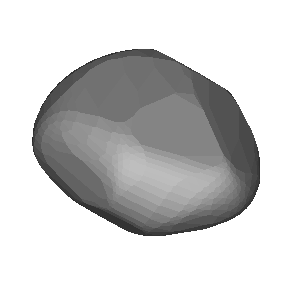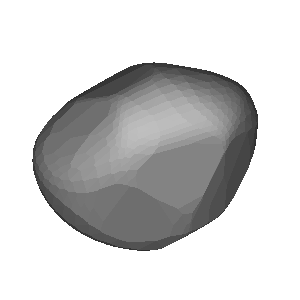1999-09-18 / TYC 1882-00999-1 / (110) Lydia
| # | OBS | Observer | Occ | Meth. | Instr. | CC | TSRC | UT1 | UT2 | UT3 | UT4 | UT2E | UT3E | Dur. | Chrd |
|---|---|---|---|---|---|---|---|---|---|---|---|---|---|---|---|
| 1 | show | Patrick Degrelle | O+ | VIS | M153 | FR | RAD++ | 00:45:23 | 00:58:01.8 | 00:58:05.2 | 01:10:21 | 0.2 | 0.1 | 3.40 | 72.1 |
| 2 | show | Lex Blommers | O+ | VIS | L266 | NL | RAD++ | 00:52 | 00:58:09.42 | 00:58:11.10 | 01:07 | 0.5 | 0.3 | 1.68 | 35.6 |
| 3 | show | F.J. Sevilla | O- | M170 | ES | 00:45:00 | 01:52:00 | ||||||||
| 4 | show | F.R. Van Loo | O- | VIS | M250 | BE | 00:50:00 | 01:05:20 | |||||||
| 5 | show | Hazel McGee | O- | VIS | M305 | UK | 00:51:00 | 01:07:00 |
5 observations found in db: euraster
Available (probably) matching predictions (click on the link to switch):| JPL#112 : afb741a9-36ad-43cd-b3af-4a1e8a31154a [db: observed] |
Using prediction afb741a9-36ad-43cd-b3af-4a1e8a31154a for map and profile fit
| Ellipse and circular profile fits to the timings (chords) |
|---|
|
|
Auto-Fit Result: X0,Y0 = 316.1, 29.2 km Circular diameter = 75 km From 2 chords (VIS) You can enter space separated chord numbers (example: 11 4 8) or a method like VIS to ignore all visual timings, or a time source like RAD and NTP (but not GPS). If the plot disappears, then there are less than 2 chords left (too much ignored, go back with browser). Check SiMDA for size and mass data. Check Johnston Archive for satellites. |
Sky projection (artificial light) for occ. time: 1999-09-18, 00:58 UT (JD = 2451439.540)
| DAMIT | Q | P (h) | λ, β | JD0 | JD-JD0 | φ0 | Version | Modified | Vol-equiv D | Cmnt |
|---|---|---|---|---|---|---|---|---|---|---|
| # 152 | None | 10.926 | 149°, -55° | 2.436494e6 | 14945.5 | 0.0° | None | 2010-05-27 | 91.0 +/- 1.0 km | 2009-02-26 |
| # 153 | None | 10.926 | 331°, -61° | 2.436494e6 | 14945.5 | 0.0° | None | 2010-05-27 | 95.5 +/- 1.5 km | 2009-02-26 |


Image size: 300px. Transparent image background for copy & paste
| Map with groundtrack and observer stations |
|---|
| Event Details |
|---|
Occultation UUID [and DB] : afb741a9-36ad-43cd-b3af-4a1e8a31154a [observed] Occultation Date + Time : 1999-09-18 at 01:00:57 UT +/- 0.02 min [1] Object Designation : (110) Lydia Orbit Class : MBA Star Designation : GDR3 3431760336444612992 Star Coordinates (ICRF) : RA = 06 23 05.6418, DE = +25 05 10.803 [2] Star Magnitudes : G = 10.11 mag, RP = 9.44 mag, BP = 10.63 mag Object Magnitude : V = 13.25 mag Estimated Magnitude Drop : 3.2 mag Estimated Max. Duration : 4.1 sec Object Mean Diameter : 86 km (src: astorb) Speed of the shadow : 21.2 km/s Elongation to Moon & Sun : 170° (sunlit = 52%), Sun = 79° Cross-track uncertainty : 1.3 mas = 2 km = 0.03 path-width (1-sig) RUWE and duplicate source : 0.89 mas, dup.src = 0 (0:false, 1:true) Ephemeris Reference : JPL#112 [1] time t0 of closest geocentric approach c/a, [2] including proper motion until t0 |
| More Data and Informations |
|---|
(If error 404: link not valid which means no data available)
| Aladin Sky Atlas |
|---|
| Aladin Lite direct link (has Gaia overlay) |